Moomba, the Royal Melbourne Show, New Years Eve…Victorians love to celebrate major events with fireworks. Firework displays in Victoria date back as far as 1839, when they were used to welcome Lady Franklin, wife of the Governor of Tasmania, and Superintendent Charles Joseph La Trobe, to Melbourne.1 While we might have an idea of what a typical firework display looks like (such as the regular ones held each New Years Eve), the displays of the nineteenth century were completely unlike what we see today.
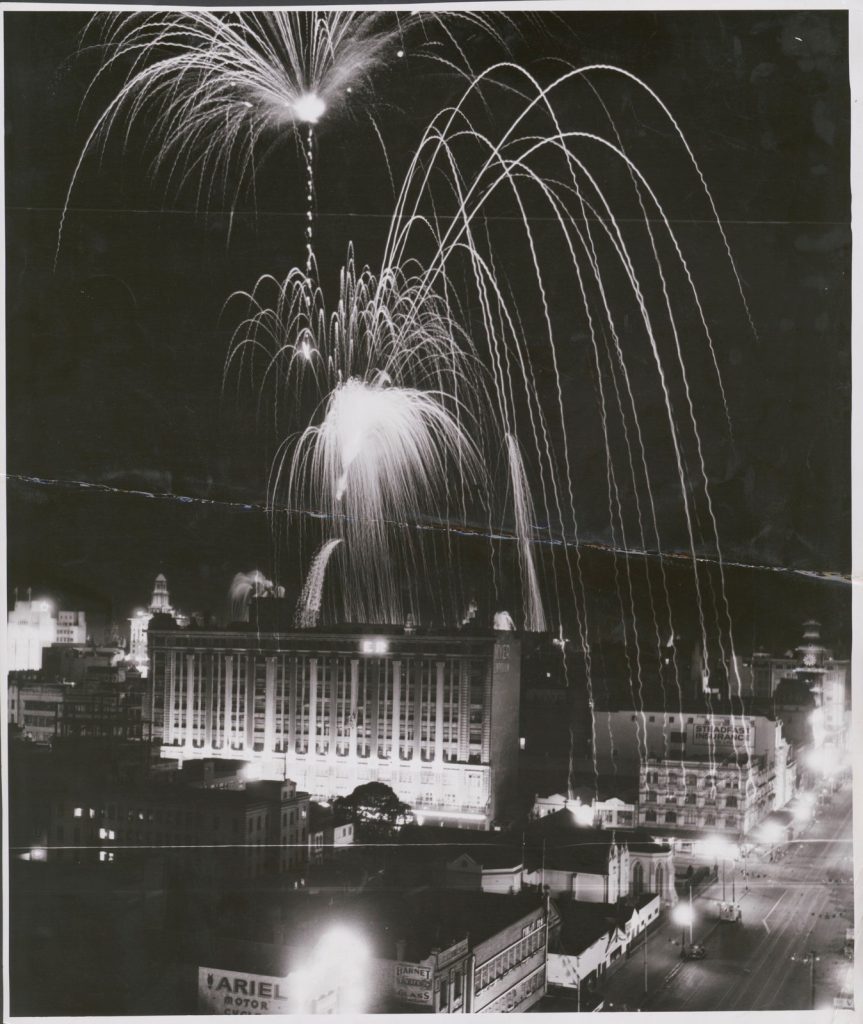
An early and spectacular firework display accompanied the 1867 visit to Melbourne by Alfred the Duke of Edinburgh, Queen Victoria’s son – the first royal to visit Australia. Alfred’s arrival was marked by celebrations right across the state, many featuring illuminations and fireworks.
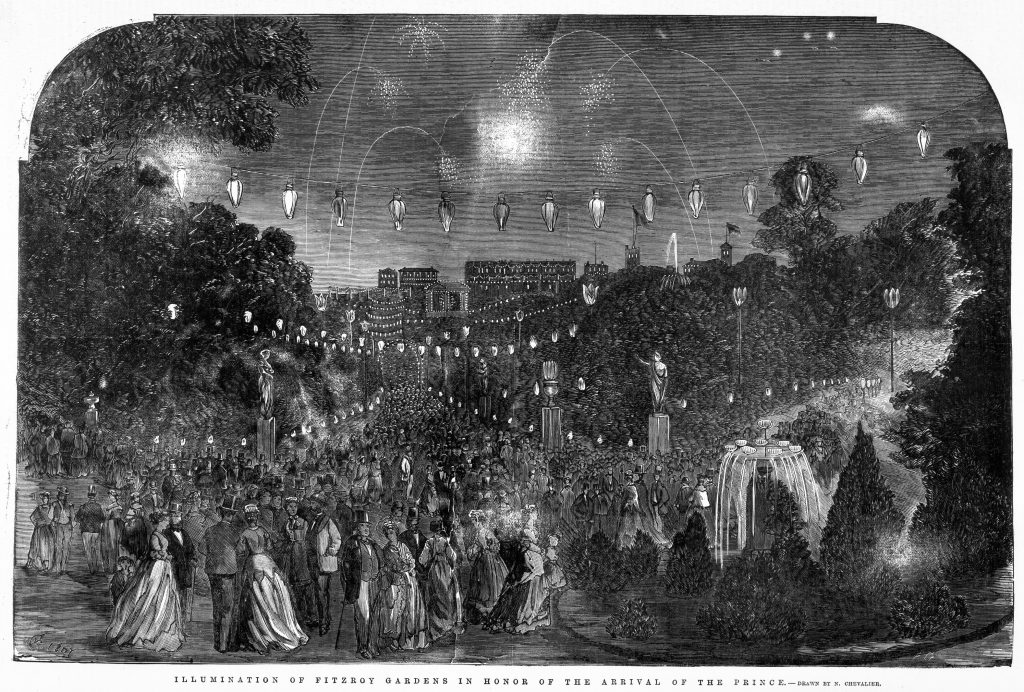
Unlike contemporary firework displays, those in the nineteenth century often incorporated props and other illuminations. The fireworks held in Yarra Park for the royal visit must have been quite a sight for Melbournians, many of whom had never experienced lighting at this scale. The show was based around a replica model of the Duke’s ship, the Galatea, upon which fireworks of different kinds were strategically placed. The model ship was decorated with various illuminations – the letters ‘VR’, a rose, two revolving globes, and sitting on top of all this, a giant crown. Across the entire length of the ship was the illuminated greeting: ‘welcome to Victoria’. These features were lit up simultaneously, while various explosives were set off from parts of the ship. The public ‘cheered lustily as each succeeding wonder was shown.’ (Bendigo Advertiser, 30 Nov 1867)
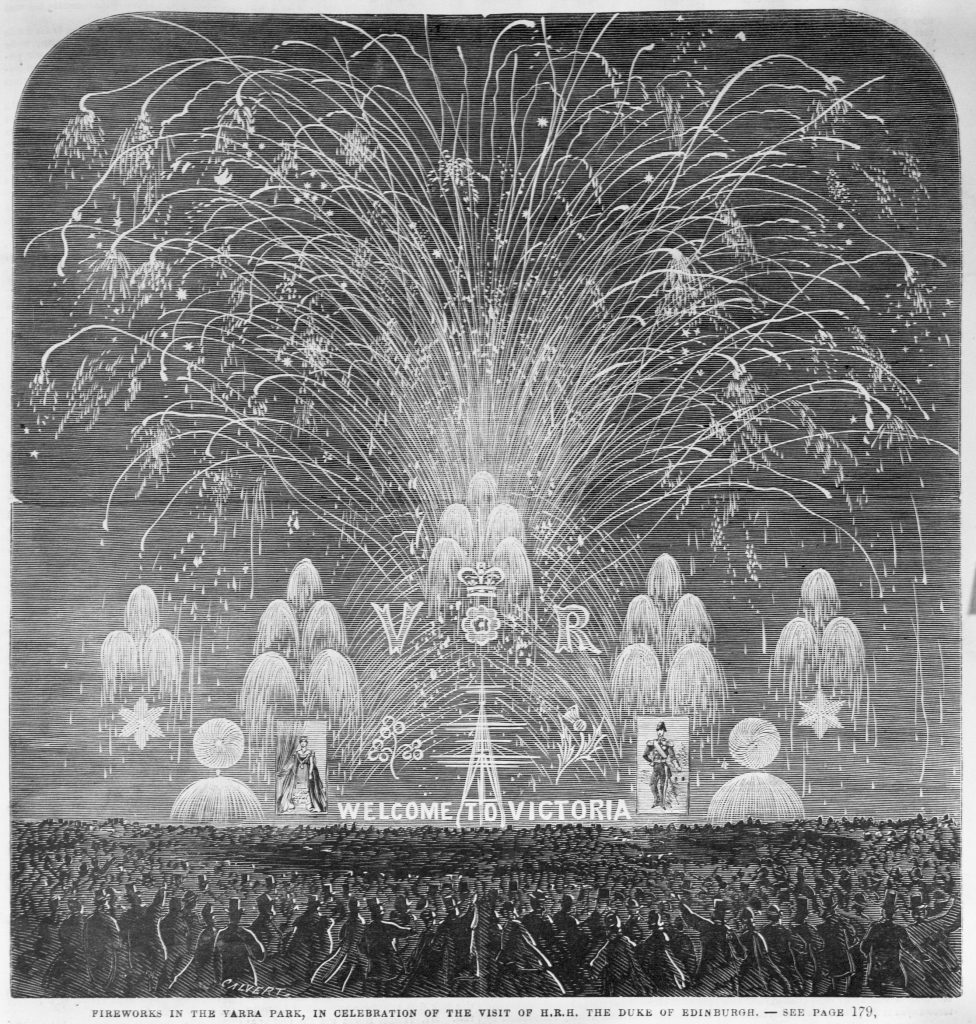
If the fireworks for the 1867 royal visit seemed spectacular, the shows produced by the English companies James Pain and Brock & Co in the late nineteenth century took things to another level. James Pain, who founded Pain’s in England, realised there was scope for shows that did more than simply setting off fireworks alone.2 These shows, held at sporting ovals and gardens, were based on historical events and featured huge casts of actors.3
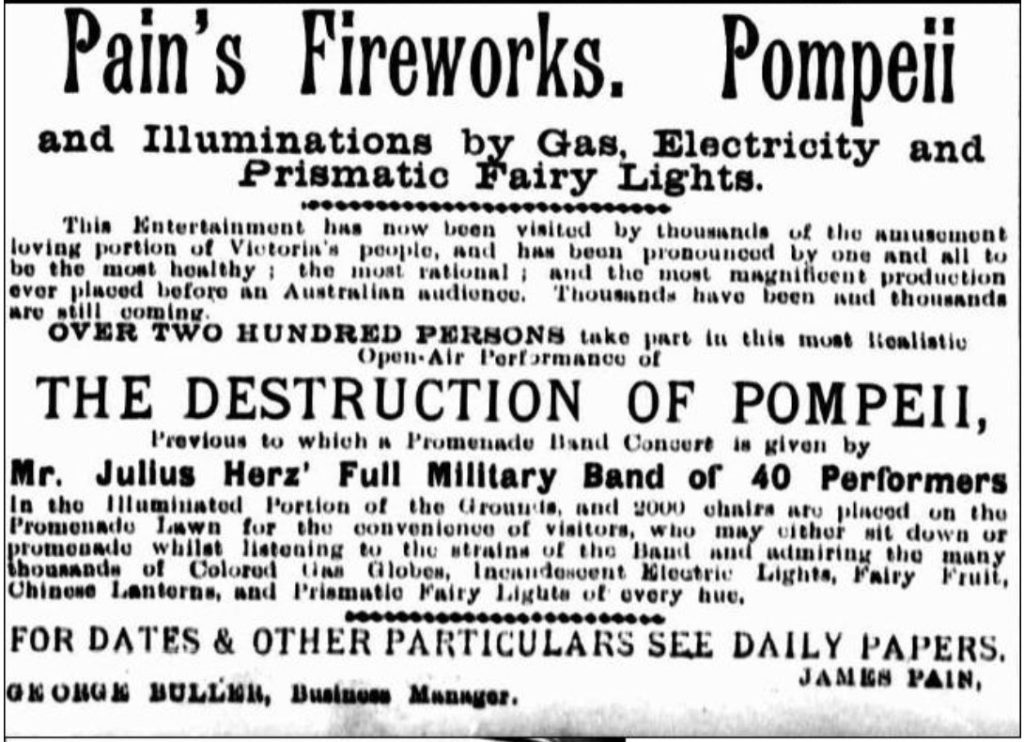
Newspaper articles from the time give a sense of what the shows were like. ‘The last days of Pompeii’ was staged in 1887 and 1888. A set depicting the ancient city of Pompeii was populated by over 200 actors dressed as Pompeiins. These actors would pretend to go about their daily lives, unaware of the tragedy that would soon occur. After some time, Mount Vesuvius, which had been glowing sporadically throughout the performance, started to spout like a geyser: ‘Explosions roar like great guns, and pillar and column and long facade come tumbling down in what appears to be eternal ruin.’ The lake, a key part of the set, would then ‘burn green, and blue, and white, and send up revolving fountains and shoot aloft fireballs.’ (Bacchus Marsh Express, 10 Dec 1887) While we don’t have an image of a Melbourne performance, the photograph below, from Coney Island, gives a sense of how these shows would have looked.
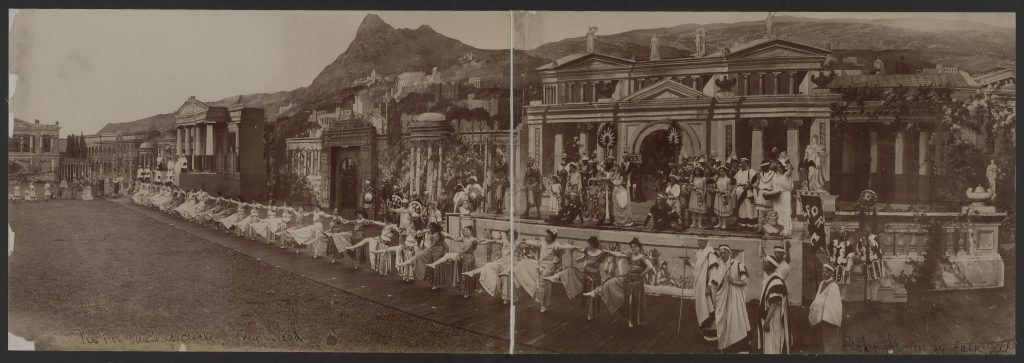
The Great Fire of London, another Pain’s production, was staged at the Friendly Societies’ Gardens a few years later, in 1890. A poster for this event can be seen below. The set for this performance was just as grand, including a replica of St Paul’s Cathedral, a marketplace, and the Thames river. In the show, ‘Londoners’ went about their business until the arrival of actors dressed in skeleton costumes with torches in their hands, signaling the ‘dance of death’. Gradually parts of the set seemed to catch fire, spreading from set piece to set piece, until London had been engulfed in flames and explosions filled the sky. (The Age, 27 Jan 1890)

While elaborate shows like these faded from existence in the twentieth century, fireworks continued to play a big part in the lives of Victorians. Guy Fawkes Day was an annual occasion for setting off crackers, as was Empire Day, a celebration of the British Empire on 24 May each year which became known as ‘Cracker Night’.4
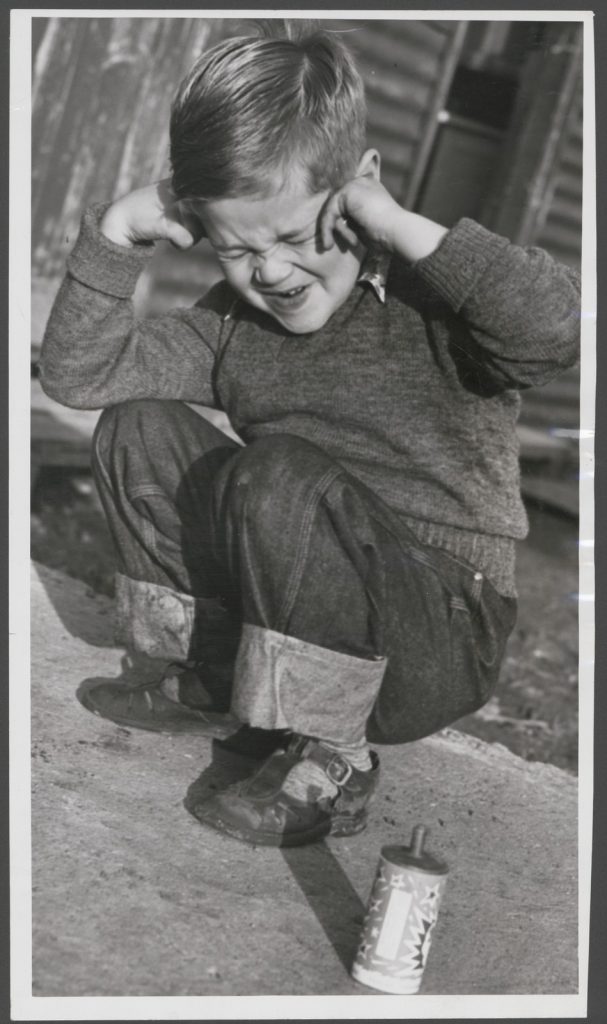
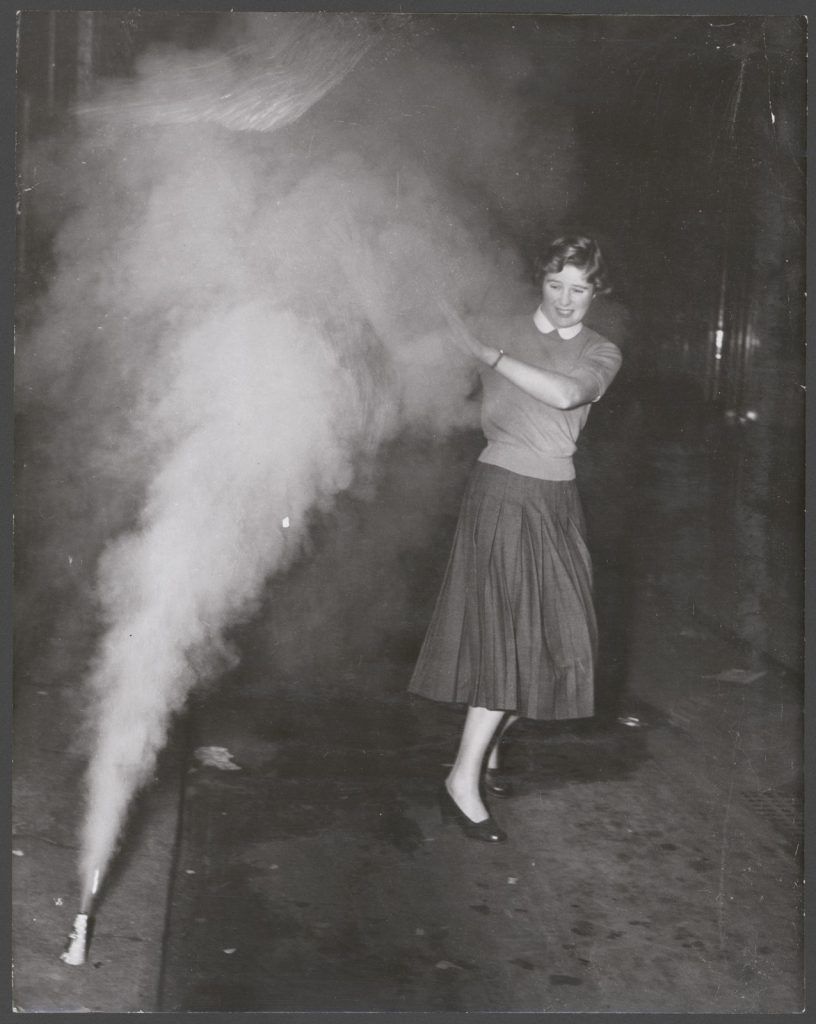
Right: Here’s a don’t for Empire Day. Miss Jenifer Cox of Toorak was walking down the street today when a youngster threw this fire cracker at her feet …, [ca. 1955], Argus Newspaper Collection of Photographs; H2002.199/1021
Fireworks originated in China, and were originally used to ward off evil spirits, before being adopted more widely and used in a number of celebratory events.5 Given Melbourne’s large Chinese community, it’s unsurprising to learn that the shops of Little Bourke Street were a great source of fireworks. Even in the 1930s when Melbourne’s Chinatown was on the decline, as manufacturing replaced retail in the area, some vestiges of the old Chinatown held out, including the firework shops. It’s hard to imagine walking into a store and being able to select from a huge variety of rockets to stage your own pyrotechnics, but this was once possible: ‘The fireworks stores are such as would transport small boys into the seventh heaven of ecstasy. Red and green crackers, huge bung-bungs, Catherine wheels, rockets, and other weird and wonderful pyrotechnic novelties are there in abundance.’ (The Herald, 14 Nov 1936)
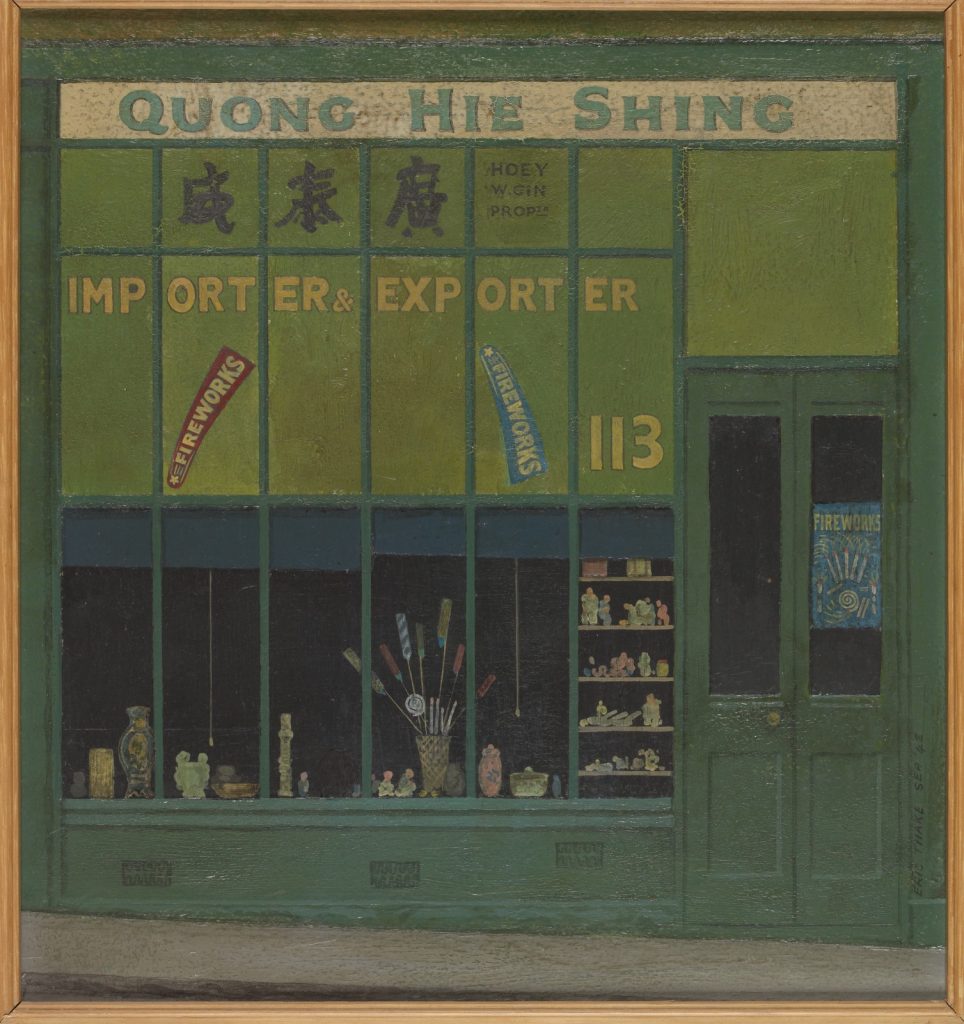
There began to be concern over the dangers of fireworks as early as the 1960s, but it was not until 1982 they were banned for sale to individuals.6 Despite the ban, now 40 years ago, a walk through Melbourne’s suburbs on New Year’s Eve is often accompanied by the sound of fireworks exploding in backyards, a sign of their enduring popularity.
- eMelbourne, 2008, Fireworks, viewed 6 May 2022, <https://www.emelbourne.net.au/biogs/EM00569b.htm>
- Heart of Coney Island, 2015, Coney Island History: The Story of Pain’s Manhattan Beach Fireworks Shows, viewed 11 May 2022, <https://www.heartofconeyisland.com/pains-fireworks-manhattan-beach-coney-island.html>
- eMelbourne, 2008, Fireworks, viewed 6 May 2022, <https://www.emelbourne.net.au/biogs/EM00569b.htm
- As above
- Culp, J, 2017, Ancient Chinese technology [electronic resource], Rosen Publishing, New York
- eMelbourne, 2008, Fireworks, viewed 6 May 2022, <https://www.emelbourne.net.au/biogs/EM00569b.htm


I remember in the 1960s, when we enjoyed Guy Fawkes night, with the Katherine Wheels, penny bungers, hand-held sparklers, Tom Thumbs and other fireworks. We made a bonfire in the back yard. It was wonderful to see all the sparks and colours. And yes, children could go to a milk bar and buy them in the days up to Guy Fawkes night. A neighbour of ours injured his leg playing with crackers, so it’s good that it is regulated now.